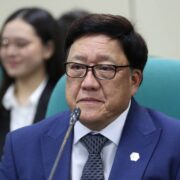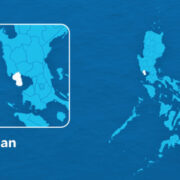Enhancing the appeal of PH retirement program

Dreaming of living out your days beachside and enjoying the slow, flip-flop lifestyle?
When it comes to retirement destinations, the Philippines could very well be a haven for both local and international retirees—if the country can overcome significant policy and perception challenges, says a recently published study titled “Philippine Retirement Authority Policy Development Impact Assessment.”
Conducted by the state think tank Philippine Institute for Development Studies (PIDS), the study highlights how the Philippines “has the potential to become a premier retirement destination and top global retirement choice” if the Philippine Retirement Authority (PRA) builds more robust policies and services, and addresses issues concerning efficiency, affordability and security.
The Special Resident Retiree Visa (SRRV) program has already been in place since 1987, and has served as the government’s primary tool to attract foreign retirees, offering these benefits: multiple-entry visas, indefinite stay privileges, and the allure of pristine beaches, warm hospitality, and a low cost of living.
Initially, the retirement program set the minimum age for retirees at 50, which proved financially unsustainable.
In a pivotal 1993 decision, the age requirement was lowered to 35—transforming the program from a financial drain to a self-sustaining economic mechanism since retirees can spend more here.
Long-term viability
Despite this success, the study highlights that attracting retirees has become increasingly costly since 2016, underscoring the need for reforms to ensure the program’s long-term viability.
Plus, the program was highly impacted by the COVID-19 pandemic, which led to the reduction of retiree numbers to levels well below the pre-pandemic peak.
“While the forecast volume of retirees is on an upward trend, it is still lower than pre-pandemic levels,” the study says.
The research recommends three options to revitalize the retirement program:
The Malaysian Mimicry: Raise visa fees to match Malaysia’s rates and restrict the visa to a five-year, single-entry format—a strategic move to align with regional competitors.
Privilege Pruning: Maintain the current $20,000 fee but introduce stringent limitations. No more automatic renewals, restrictions on housing purchases—a leaner, more controlled approach.
Luxury Targeting: A dramatic fee increase to $200,000-$300,000, targeting high-net-worth retirees while preserving existing program privileges.
“These reforms could attract a smaller but higher-quality pool of retirees with greater foreign exchange inflows,” reads the study.
Beyond visa strategies, the study calls for a comprehensive operational transformation by streamlining document verification processes; decentralizing services for greater convenience; strengthening banking partnerships; enhancing marketing efforts; simplifying application procedures; and building stronger international diplomatic connections.
After all, the retirement program isn’t just about visas—it’s an economic lifeline. Foreign retirees contribute significantly to tourism, generate foreign exchange, and inject capital into local economies.
Regression analysis in the study highlights critical influencers of retiree volumes: Consumer sentiment, exchange rates. real estate expenditures
Ultimately, the research shows that the Philippine retirement industry remains economically viable.
Its success requires more than competitive pricing; it demands a nuanced strategy that balances economic opportunities with national perceptions and security concerns, as well as the art of crafting a compelling international retirement experience.





















